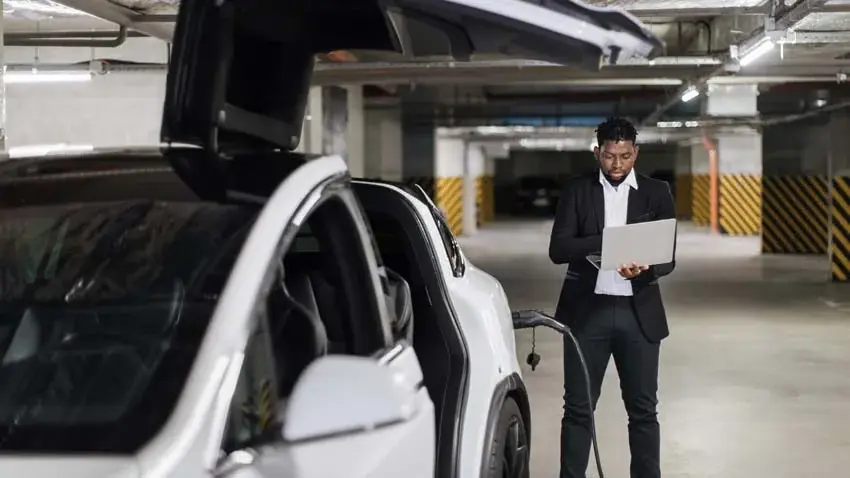
Better than one might think?
Sales of electric and plug-in hybrid vehicles continue to grow in the UK, with fully electric vehicles (EVs) outselling plug-in hybrids (PHEVs). Electric cars are no longer a novelty, and the early resistance that greets many new technologies is dissipating.
The technology, quality and reliability of EVs are constantly developing and improving. Better batteries mean faster charging, extended range and improved safety. Systems that displayed early teething troubles are being refined and problems are steadily being eliminated.
Many of the issues that arose with early electric models are in the past. Many more have been traced back to drivers being unfamiliar with the new systems and charging or operating cars incorrectly. Some manufacturers have been criticised for confusing user/driver interfaces as drivers have sometimes been baffled or misled by information and warning lights displayed by their EVs.
Improvements in all areas mean that today's electric cars are comparable to internal combustion models in terms of safety and reliability. Indeed, breakdown service Start Rescue has said that EVs are less likely to require roadside assistance than petrol and diesel cars. That said, we must remember that many of the EVs on the road are still older models, and some people will buy used examples as new EV prices remain relatively high. So, even though teething troubles are being phased out, occasional legacy issues could remain common for a while yet.
But nothing is perfect
On paper, with fewer moving parts, EVs should require considerably less mechanical maintenance than internal combustion engine vehicles (ICEs). While we are getting closer to seeing that in the real world, there are still improvements to be made, and problems do still arise. Below, we look at a few of the more common electric car issues reported by drivers. We say "more common" but, in reality, these are becoming increasingly rare as manufacturers improve designs.
It should be borne in mind that some issues are specific to certain models or manufacturers, and aren't necessarily problems that occur with EVs in general.
Software issues
These are most often seen on older EVs. Many manufacturers have released software updates and fixes, but these have not been applied to all affected cars. It's a good idea to check with your dealer or service centre to make sure your car's software is up to date.
Electronic failures
EVs have many sensors and other electronic components not found in ICEs. That said, even drivers of petrol cars have often experienced a worrying dashboard warning light only to be told by their mechanic that the car is fine apart from a faulty sensor wrongly reporting a problem. Sensor failure on an electric car can be very serious. Temperature sensors etc can detect potentially dangerous problems with batteries and braking systems, so a higher than expected failure rate is something manufacturers have been keen to address.
Other electrical faults present less of a safety risk but remain annoying and potentially expensive to fix. Electric doors and windows, in-car entertainment and navigational aids all crop up on lists of common issues.
Tyre wear
EVs are significantly heavier than ICEs. This, of course, means that their tyres take a great deal of punishment. As well as accelerated wear, the additional weight of an EV means its tyres are more prone to damage from impact with kerbs and traffic-calming features such as speed bumps, especially at higher speeds.
Drivers are very strongly advised to use the correct tyres on their electric cars. EV tyres are specifically made to last longer and offer greater safety than standard tyres, which are simply not made to deal with such loads.
Suspension
Like tyres, suspension has to cope with the greater weight of your electric car. Driving on rough terrain, or hitting kerbs and traffic-calming humps at speed will take more of a toll on your EVs suspension than on that of an equivalent ICE car.
Battery problems
While battery fires are not common in electric cars, they have been reported on occasion. Lithium batteries may fail catastrophically under some circumstances, as we have seen on news reports about electric bike fires. That does not imply that electric car batteries are equivalent to e-bike batteries, and especially not to the sub-standard and counterfeit batteries that have caused many bike fires. We're just pointing out that lithium batteries can catch fire in a way that conventional lead-acid batteries do not. For this reason, problems with charging systems and battery sensors should be addressed immediately they become evident.
Research by Warranty Solutions Group found that the most common 2023/2024 warranty claim item was a faulty battery charge control module, at an average repair/replacement cost of £1,311.
Batteries may also degrade prematurely under some circumstances. Under good conditions, a battery should last for 10-20 years before it needs replacing, and many manufacturers actually offer a 10-year warranty.
Advice issued to help drivers get the most from their batteries includes:
- Keep batteries topped up to 80% with regular charging. Do not allow batteries to fully discharge, and try not to charge past 80% too often. Charging above 80% can contribute to battery degradation. Best practice says try to maintain your battery's charge level between 20% and 80%.
- Don't use fast charging. Fast charging also shortens the life of batteries. Plan your charging sessions, leaving yourself plenty of time to charge at normal speed.
- Keep your EV's software updated. Some updates can tweak your car's efficiency to help you get maximum range and performance from your battery.
- Extremes of temperature may affect performance and range. Cold weather can also mean longer changing times for your battery.
- After driving for an extended period, let your battery cool down before charging. A cool battery charges more efficiently.
